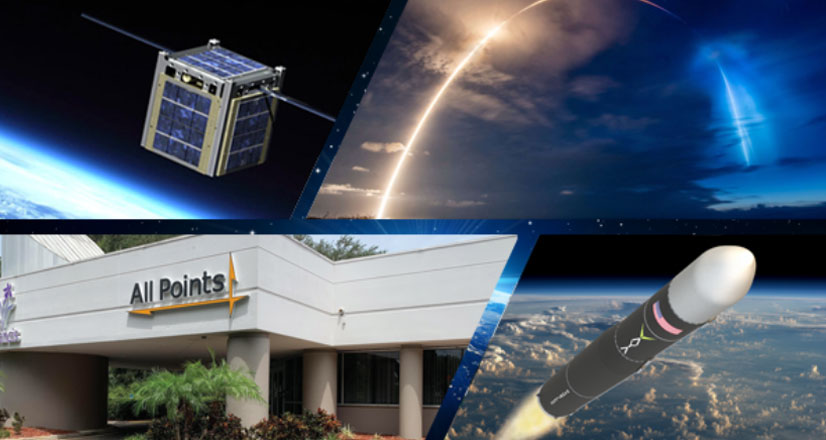
20 May Bridging the Gaps Between Commercial Space Launch and its Specialized Infrastructure and Operational Needs
As prices drop and technological opportunities abound, various industries have a sudden interest in putting satellites into orbit for various uses: aircraft and maritime tracking, collecting atmospheric data, monitoring greenhouse gases and radio transmissions, improving communications connectivity and internet access, monitoring and securing near-earth space, and yet unforeseen uses. Early in 2021, SpaceX launched a record 143 small satellites, ranging in size from a slice of bread to a gorilla. Although it was the cheapest rideshare launch ever, this mission did not represent a breaking down of important entry barriers to the commercial space market. Buying a ticket to space, having a good business justification to do so and a plan for using your satellite need not make you a “space company;” right? Unfortunately, smaller companies have had few ways to get around relatively huge investments (or, conversely, risks) leading up to launch. That’s why we have begun offering a wide range of launch support services to manage logistics, mission readiness, payload integration, ground control, and training. Mission operability (i.e., the efficiency of your operations and its infrastructure) is our business. We tailor these services to make missions easier for launch providers who may face infrastructure issues of their own at crowded launch sites far from headquarters.
Payload Maker Perspective: Stick to Your Business
NASA estimates it typically takes 18-24 months for a company to design, build, test, and deliver a CubeSat, and then it could be between a few months and a few years to actually launch. For larger missions in the past, NASA has offered resources near launch sites for mission coordination, ground station development and testing, and pre-launch processing and integration. These resources are, for the foreseeable future, consumed by ongoing projects as the demand for launch facilities has. . . skyrocketed. Here is a hypothetical example of a typical company that might be looking for the services we are creating:
An environmental company has a team of 40 engineers highly specialized in creating optical sensors for measuring the temperature of the ocean’s surface. They may be backed by dozens of data analysts and researchers, lab technicians, etc. Nowhere on this midsized team will we find someone qualified to build a process for preparing flight hardware. It is just too far out from their core business. And this launch may only be a once-in-a-generation company expense. But now that they want to launch the CubeSat, they need a mobile team who can support the launch and mission operations.
The solution is a pay-as-you-go arrangement with a site-local, mission-first launch support company, which will offer storage and testing of hardware near the launch site, expertise in testing the payload and integrating it to the dispenser, integrating the dispenser to the launch vehicle, and setting up your ground operations for success. Many companies would like further assurance that specialized staff can be contracted at any point in the project. Why take the risk of building your own team and infrastructure when that’s not your core business? For many, such a set of services will enable them to consider satellite launches at earlier stages in company maturity.
We are in a unique position as a mid-sized company, headquartered on Florida’s Space Coast, with elite engineers who specialize in launch and ground systems. Our team has helped launch hundreds of missions and payloads at multiple launch sites. We are currently helping to develop the Orion spacecraft and the Starliner spacecraft, and we’re supporting logistics for other aspects of the Artemis program. We have veterans of the Shuttle era who understand payload integration like no others. And we have (and are expanding) the facilities to make us a cost-saving option.
Center for Innovation and Technical Excellence
Few peers have made an internal investment so bold as our Center for Innovation and Technical Excellence (CITE). The 16,000 square foot center is outfitted with computing infrastructure suitable for over 100 personnel, less than two miles from the main entrance to NASA’s Kennedy Space Center. We are crafting this space to be a customizable home away from home for companies who need to be near the launch site.
Launch Provider Perspective
Smaller companies who have built satellites and newer launch providers need the same general thing: infrastructure nearer the launch site. Launchers need logistics support, such as secure storage, kitting and receiving, and transportation services. If they choose to get involved with us earlier in mission planning, our CITE and planned facilities will include clean rooms and assembly areas for spacecraft testing to serve their needs.
Even if there is nothing left but the lift-off, we will be able to assist with the final two critical elements of the mission. 1. Integration between payload and launch vehicle is unavoidable near the launch site. A space that is already designed to your specifications for rent is a much cheaper option for younger companies or those who may do many launches elsewhere. 2. Finally, our most exciting offering will be a customizable launch control center. The ability to configure a control center to a particular mission to be used remotely will be great news to launchers and payload operators who are set up to do business in their own region. We will guide the process of setting up displays, creating commands for launch sequences, and setting up communications links between pad, payload, and communications assets. Users will incur costs only for the time they use the facility.
The commercial space age faces a bottleneck in terms of logistics. Further, the expense of remaining near the few most popular launch sites and obtaining infrastructure is a barrier for smaller launchers and their customers. Our vision is to eliminate these barriers with launch support services that streamline your path to space.

